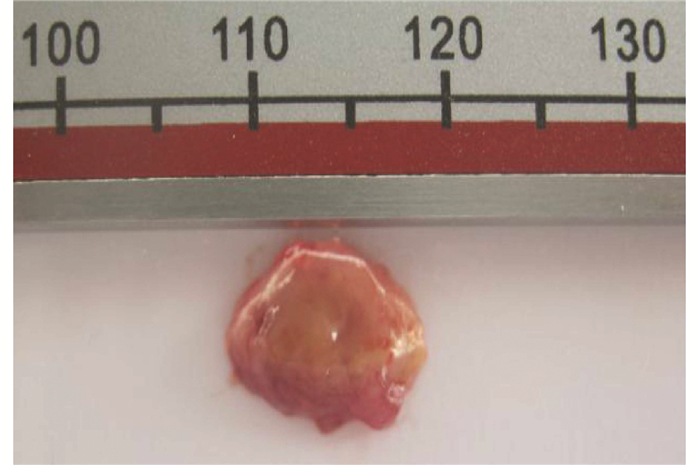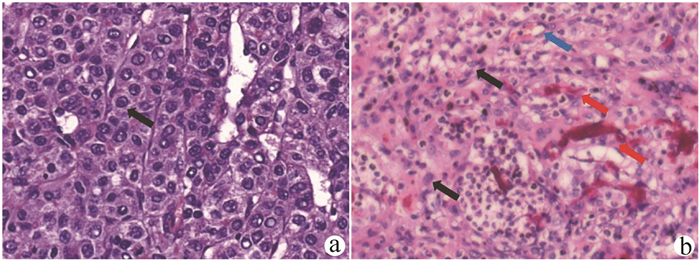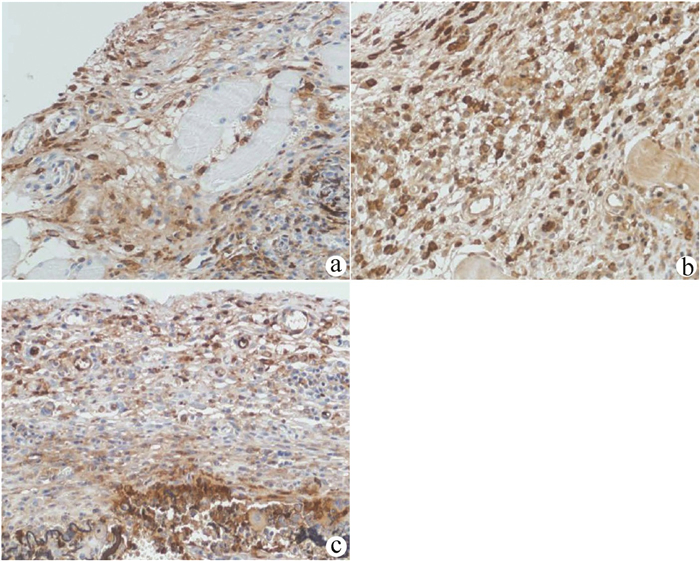| [1] |
BRAY F, FERLAY J, SOERJOMATARAM I, et al. Global cancer statistics 2018: GLOBOCAN estimates of incidence and mortality worldwide for 36 cancers in 185 countries[J]. CA Cancer J Clin, 2018, 68(6): 394-424. DOI: 10.3322/caac.21492. |
| [2] |
LI L, CHEN J, CHEN X, et al. Serum miRNAs as predictive and preventive biomarker for pre-clinical hepatocellular carcinoma[J]. Cancer Lett, 2016, 373(2): 234-240. DOI: 10.1016/j.canlet.2016.01.028. |
| [3] |
SIEGEL RL, MILLER KD, JEMAL A. Cancer Statistics, 2017[J]. CA Cancer J Clin, 2017, 67(1): 7-30. DOI: 10.3322/caac.21387. |
| [4] |
IZUMCHENKO E, MEIR J, BEDI A, et al. Patient-derived xenografts as tools in pharmaceutical development[J]. Clin Pharmacol Ther, 2016, 99(6): 612-621. DOI: 10.1002/cpt.354. |
| [5] |
POMPILI L, PORRU M, CARUSO C, et al. Patient-derived xenografts: A relevant preclinical model for drug development[J]. J Exp Clin Cancer Res, 2016, 35(1): 189. DOI: 10.1186/s13046-016-0462-4. |
| [6] |
XU C, LI X, LIU P, et al. Patient-derived xenograft mouse models: A high fidelity tool for individualized medicine[J]. Oncol Lett, 2019, 17(1): 3-10. DOI: 10.3892/ol.2018.9583. |
| [7] |
BI YZ, KONG LB, GAO PF, et al. Construction of a normal immune mouse human gastric cancer transplantation model based on microcarrier 6[J]. Chin J Clin Oncol, 2017, 44(5): 199-203. DOI: 10.3969/j.issn.1000-8179.2017.05.168. |
| [8] |
WANG QY, SUN FQ, BI YZ, et al. Establishment of microcarrier human gastric cancer animal model and discussion of pathological characteristics[J]. Chin J Gen Surg, 2017, 32(10): 895-896. DOI: 10.3760/cma.j.issn.1007-631X.2017.10.031. |
| [9] |
HUANG R, HONG F, BI YZ, et al. Establishment of primary ovarian cancer model in mice with normal immunity[J]. Progr Obstetr Gynecol, 2018, 27(12): 901-904. DOI: 10.13283/j.cnki.xdfckjz.2018.12.004. |
| [10] |
KUDO M. Systemic therapy for hepatocellular carcinoma: 2017 update[J]. Oncology, 2017, 93(Suppl 1): 135-146. DOI: 10.1159/000481244. |
| [11] |
GRANDHI MS, KIM AK, RONNEKLEIV-KELLY SM, et al. Hepatocellular carcinoma: From diagnosis to treatment[J]. Surg Oncol, 2016, 25(2): 74-85. DOI: 10.1016/j.suronc.2016.03.002. |
| [12] |
RICH NE, YOPP AC, SINGAL AG. Medical management of hepatocellular carcinoma[J]. J Oncol Pract, 2017, 13(6): 356-364. DOI: 10.1200/JOP.2017.022996. |
| [13] |
ZHU J, YIN T, XU Y, et al. Therapeutics for advanced hepatocellular carcinoma: Recent advances, current dilemma, and future directions[J]. J Cell Physiol, 2019, 234(8): 12122-12132. DOI: 10.1002/jcp.28048. |
| [14] |
YAN Y, CHEN N, WANG Y, et al. The application of antitumor drug-targeting models on liver cancer[J]. Drug Deliv, 2016, 23(5): 1667-1675. DOI: 10.3109/10717544.2015.1064188. |
| [15] |
WEBER A, O'CONNOR T, HEIKENWALDER M. Next generation of preclinical liver cancer models[J]. Clin Cancer Res, 2015, 21(19): 4254-4256. DOI: 10.1158/1078-0432.CCR-15-1152. |
| [16] |
OKADA S, VAETEEWOOTTACHARN K, KARIYA R. Establishment of a patient-derived tumor xenograft model and application for precision cancer medicine[J]. Chem Pharm Bull (Tokyo), 2018, 66(3): 225-230. DOI: 10.1248/cpb.c17-00789. |
| [17] |
CHO SY, KANG W, HAN JY, et al. An integrative approach to precision cancer medicine using patient-derived xenografts[J]. Mol Cells, 2016, 39(2): 77-86. DOI: 10.14348/molcells.2016.2350. |
| [18] |
ZHENG MJ, WANG J, CHEN YW, et al. A novel mouse model of gastric cancer with human gastric microenvironment[J]. Cancer Lett, 2012, 325(1): 108-115. DOI: 10.1016/j.canlet.2012.06.011. |








 DownLoad:
DownLoad:



